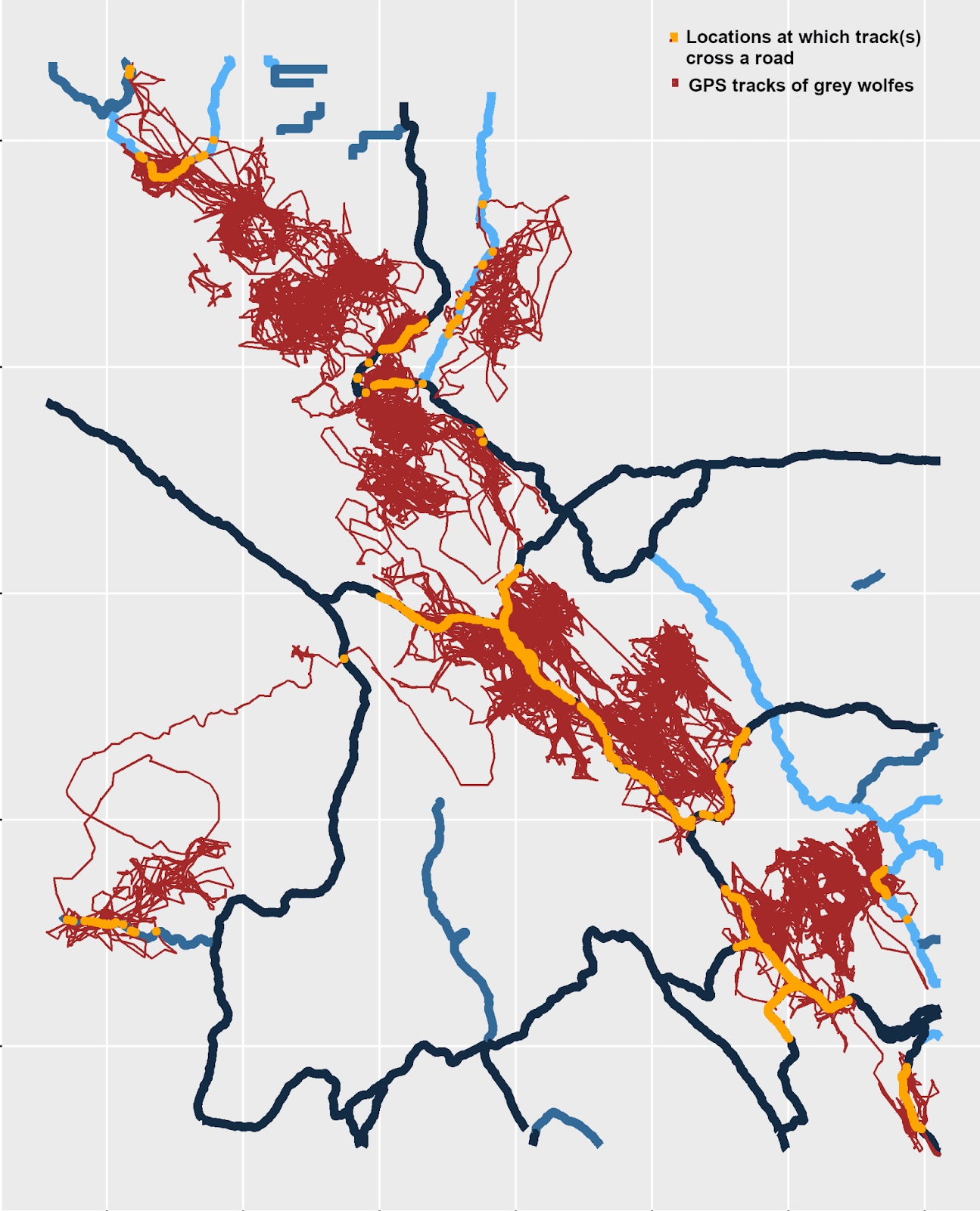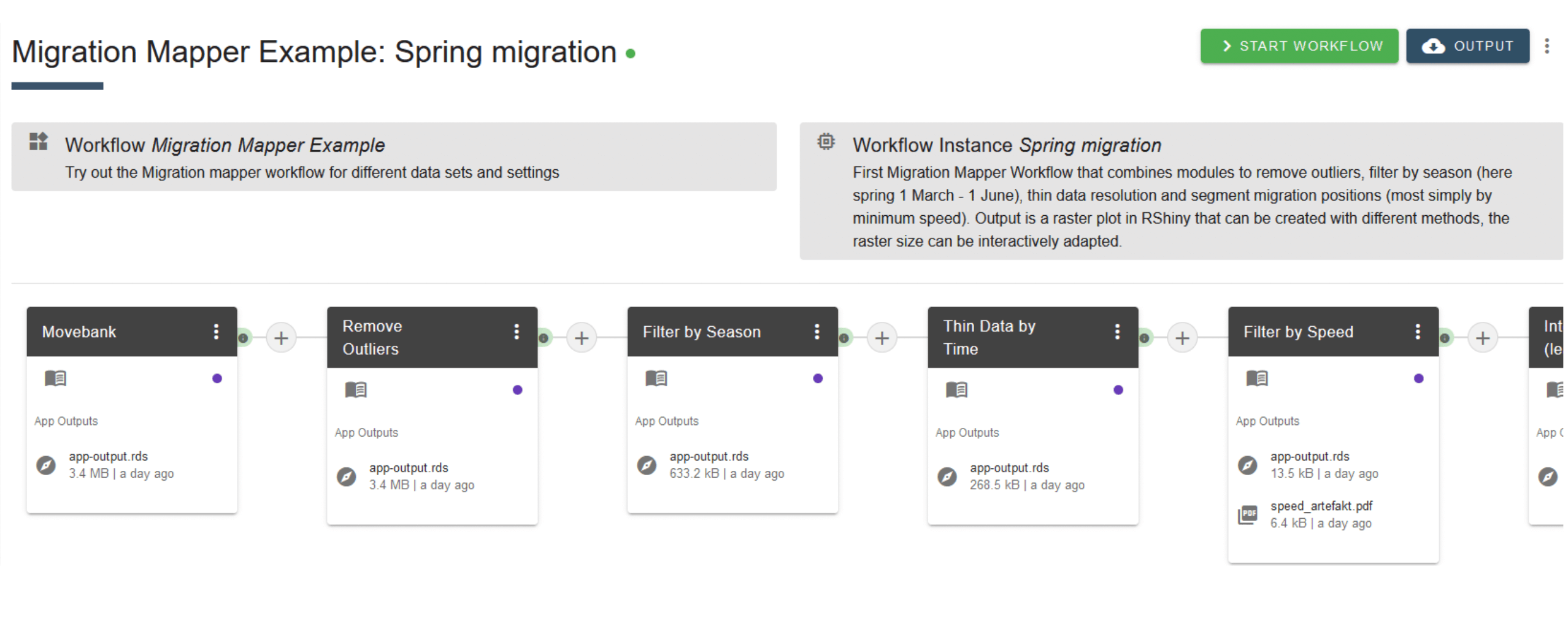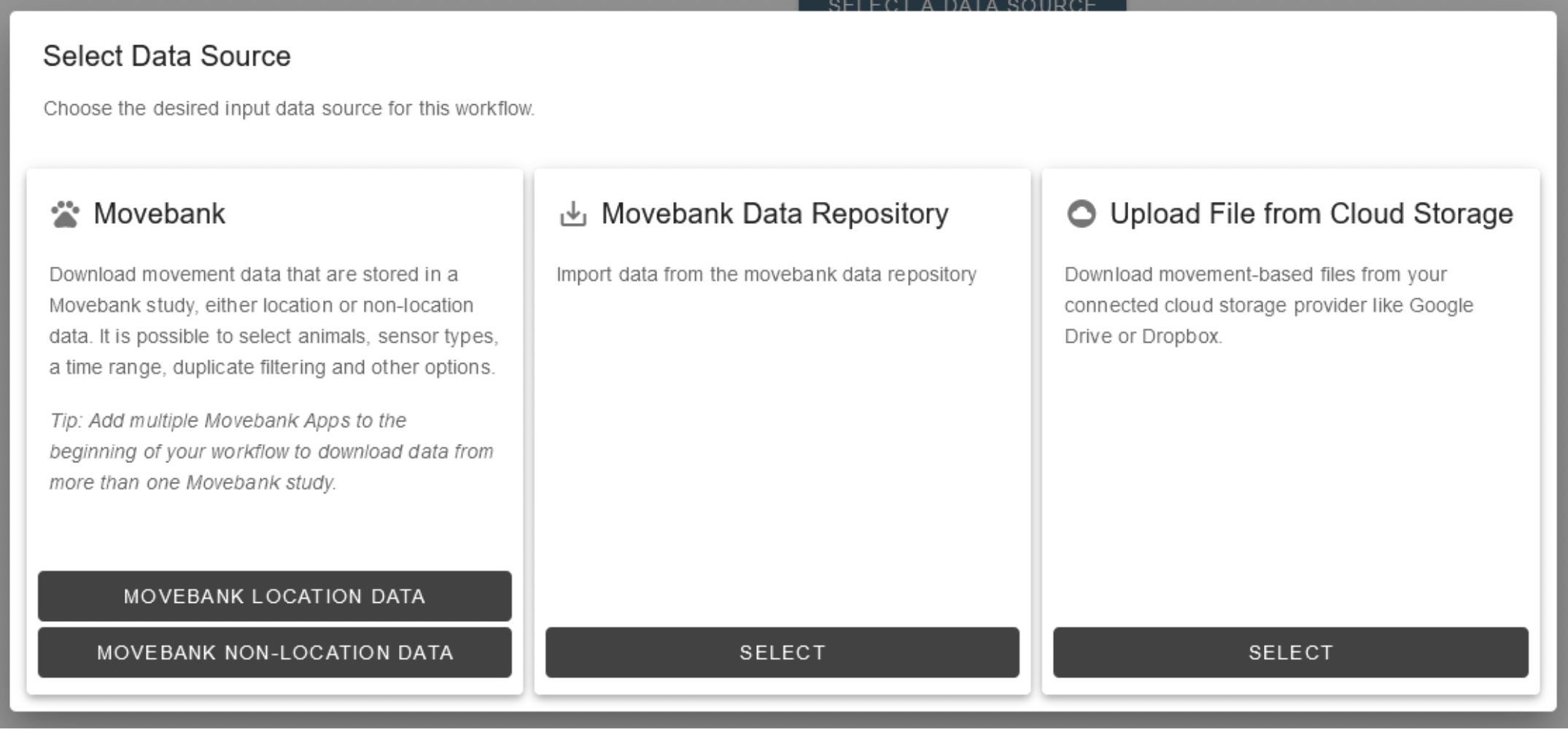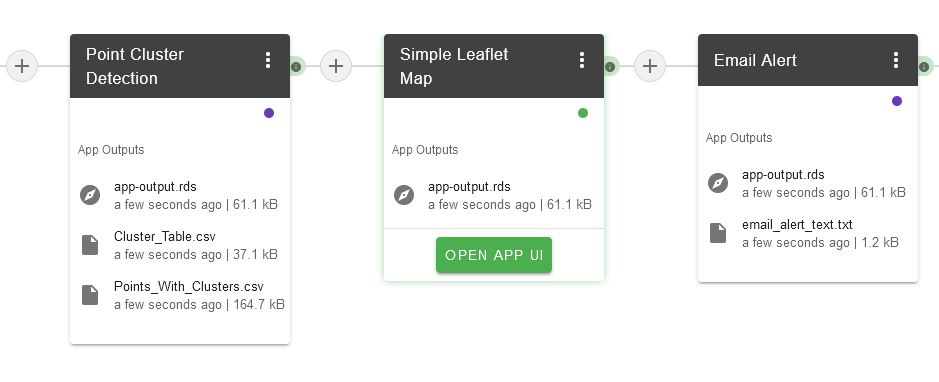This case study in our Conservation Tech Showcase highlights MoveApps, a platform that offers free, no-code analysis tools for animal tracking data hosted by the Max Planck Institute of Animal Behavior.
MoveApps was named one of the winners of the 2022 Conservation Tech Awards from EarthRanger.
About MoveApps
MoveApps' analysis tools are a valuable resource for researchers and professionals in the field of animal movement research. The platform offers free, intuitive analysis modules, publishing of analysis workflows, a sustainable and inclusive platform, and near-real-time automated analyses.
Users of the MoveApps platform can create workflows by combining various apps to analyze data from the Movebank database. The apps are created both by the MoveApps team and the wider coding community in languages like R, R-Shiny, and others.

The goal of the project is to foster collaboration between movement ecologists and wildlife managers who are looking for flexible analysis tools, and those who are developing such tools and want to share them with others.
What makes MoveApps Different?
MoveApps stands out as an innovative and unique platform for animal movement research in several ways. Firstly, it offers intuitive analysis modules or apps that are free to use and open source, allowing for community improvement.
Secondly, MoveApps allows for the publishing of analysis workflows, providing recognition for programmers and ensuring reproducible analytics.
Thirdly, it is a sustainable and inclusive platform with a serverless, cloud-native computing architecture that allows for powerful analyses to be done in seconds without requiring a fast computer. This promotes a more democratic and creative future in which science is open to everyone regardless of financial constraints.
Finally, MoveApps supports near-real-time, automated analyses that can be used for conservation purposes, such as the detection of feeding clusters where animals may be at risk. Staff on the ground receive alerts through the EarthRanger app, which is seamlessly integrated into MoveApps, enabling them to launch rapid responses.
MoveApps' Potential Impact on Conservation: Success Stories
Moveapps has been successful in attracting more than 450 users worldwide in its beta version, although usage statistics are not yet systematically collected. The platform currently offers 62 Apps that include data filtering and transformation, visualization and animated maps, home range estimation, path segmentation, and nest detection. Much of this functionality was requested by wildlife managers from state and federal government agencies, non-profit organizations, and academic institutions during initial outreach efforts. MoveApps has gained recognition among wildlife professionals for its potential to make data analysis more efficient, generate internal reports, easily share results and visualizations with partners and funders, and encourage managers to store data in one place (i.e., Movebank) rather than on local hard drives spread throughout a region or state.

Movebank, a database for storing animal movement data, is used by more than 3,500 users globally and holds tracks of around 200,000 individuals, representing over 1,200 animal species. The extensive usage of Movebank demonstrates its potential to become an important tool for conservation groups. With MoveApps being designed to analyze data from the Movebank database, these groups can immediately benefit from the platform's range of analytical tools without having to invest in additional data storage infrastructure. This integration provides a seamless and powerful solution for analyzing movement data and highlights the potential impact of MoveApps in the conservation community.
MoveApps' impact on conservation can also be seen through the positive feedback and experiences shared by organizations utilizing its tools.
The North Carolina Zoo and Osa Conservation are two such institutions using the Cluster Detection Workflow in conjunction with Earth Ranger to detect vulture feeding sites. According to scientists working on a research project with the aid of these tools, MoveApps significantly improves their ability to find scavenger feeding clusters, reducing what used to be a two-hour daily task to an automatically generated email or message on Earth Ranger. MoveApps' near-real-time analysis of tracking data streaming into Movebank allows for rapid response in the field, improving the chances of saving threatened animals. Similarly, MoveApps also helps detect changes in the movement behavior of African wild dogs, allowing for the identification and rescue of snared individuals and ultimately aiding in maintaining viable population numbers.

The Room2Roam initiative in the Yukon to Yellowstone (Y2Y) migration corridor is a second user group that closely integrates their work with MoveApps. The initiative helps scientists and managers in the area to store their data properly, share data for comparative studies and run analyses easily in MoveApps. The group is just starting to appreciate the use of MoveApps as they detect where tracked individuals interact with roads and how that affects their behavior, which can translate into managing the migration routes of caribou more effectively. Additionally, the group's ability to create dynamic visualizations of their data in MoveApps allows them to communicate more effectively with stakeholders.
While MoveApps is still in its beta version and usage statistics are not yet systematically collected, feedback from institutions such as the North Carolina Zoo, Osa Conservation, Yukon to Yellowstone and more showcases how MoveApps can continue making a wider impact on conservation in the future as this platform evolves.
MoveApps' Flexibility and Future Improvements
MoveApps' backbone structure is highly adaptable and can be scaled up easily. The platform enables users to create their own workflows by combining various Apps, or even adding new ones themselves. For example, the EarthRanger integration was developed by its developers to stream data to their system, and such integrations are possible for other websites or systems as well. MoveApps also provides a Rest API to pull analysis results from the platform to external sites regularly.

While the platform's flexibility allows for growth, it also presents challenges in communicating with users and code developers, which the team is working to address. MoveApps is planning to improve its functionality by allowing the integration of external files such as local shapefiles of roads, protected area boundaries, and environmental data with analyses. This would make it easier to adapt analyses to local requirements and increase the platform's usefulness for in-the-field conservation efforts. Additionally, MoveApps plans to improve performance by extending the usage of its cloud servers with computing power from users' Amazon Web Services accounts.
How can I engage with MoveApps?
Join the MoveApps user community today and contribute to animal movement research and conservation efforts! As a WILDLABS member, you can benefit from MoveApps' no-code analysis tools and innovative platform that offers free and open-source analysis modules created by the MoveApps team and coding community. Don't miss out on this valuable resource for researchers and professionals in the field of animal movement research.
Contact Dr. Andrea Kölzsch at akoelzsch@ab.mpg.de today for more information.



Add the first post in this thread.